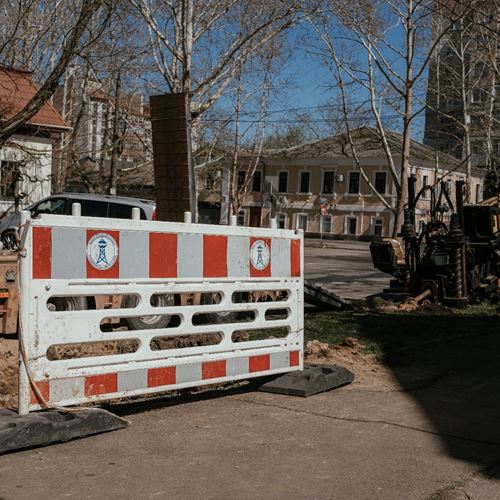
When shelling damaged Mykolaiv’s main water supply system in April 2022, the city had to switch to water from the Buh Estuary — a salty, yellowish liquid unsuitable for drinking or daily use. Emergency distribution points were set up across the city, and a new source was later connected. But by then, the damage had already been done.
“The saltwater drastically shortened the lifespan of the steel pipes,” explains Oleksandr, Shelter and Settlement Manager at DRC. “They were already over 30 years old, and now they burst regularly. Rust and debris end up in people’s taps.”
With limited funding, the local water utility, Mykolaivvodokanal, could only carry out emergency repairs. By mid-2024, just a few kilometres of the most damaged network had been replaced, while interruptions to service remained a regular part of life.
From quick fixes to long-term solutions
In response, with financial support from the Ministry of Foreign Affairs of Denmark (DMFA), DRC launched a comprehensive water network restoration project. The work began with the delivery of essential materials — including 24.5 kilometres of polyethylene pipes, cast iron pipes, valves, and pumps — and continues today, focusing on replacing sections most in need of repair.
“The new polymer pipes are more durable and corrosion-resistant,” Oleksandr says. “We prioritise the areas where residents face the biggest risks — not just from poor water quality, but from constant disruptions.”
But the effort goes beyond pipework. DRC is also supporting Mykolaivvodokanal to strengthen its internal systems. Through tailored training in warehouse management, human resources, and accounting, the aim is to build capacity and ensure the long-term sustainability of the water supply network.




